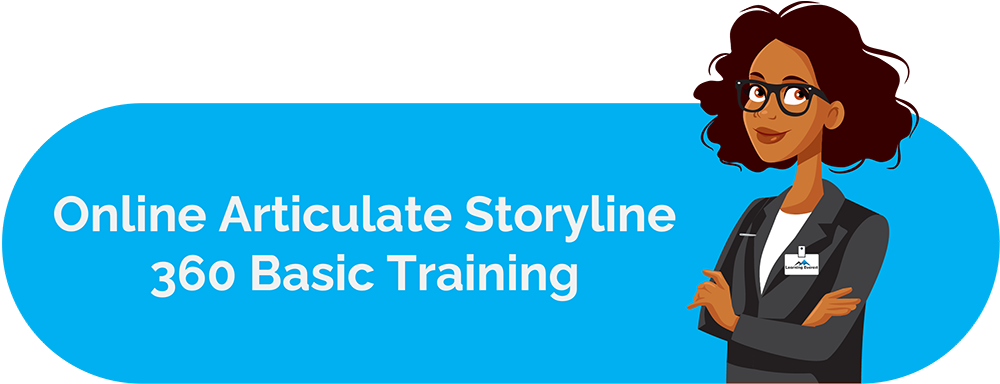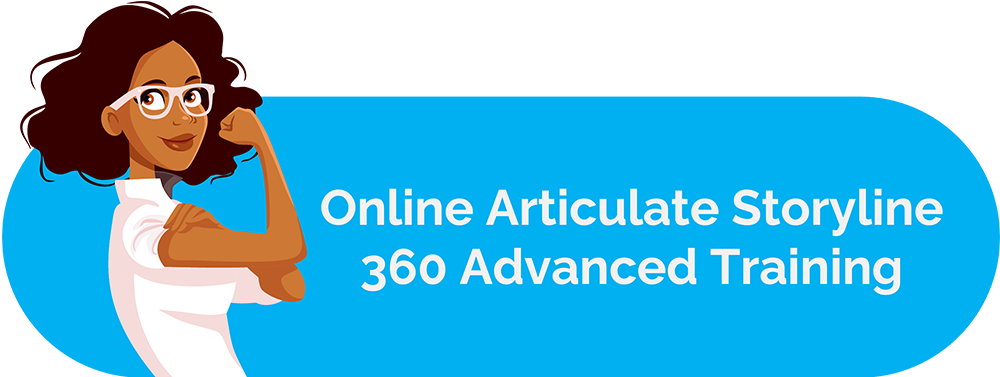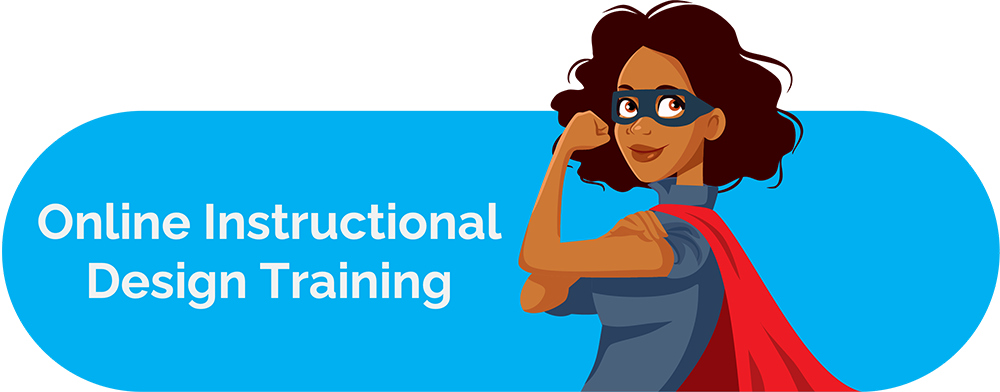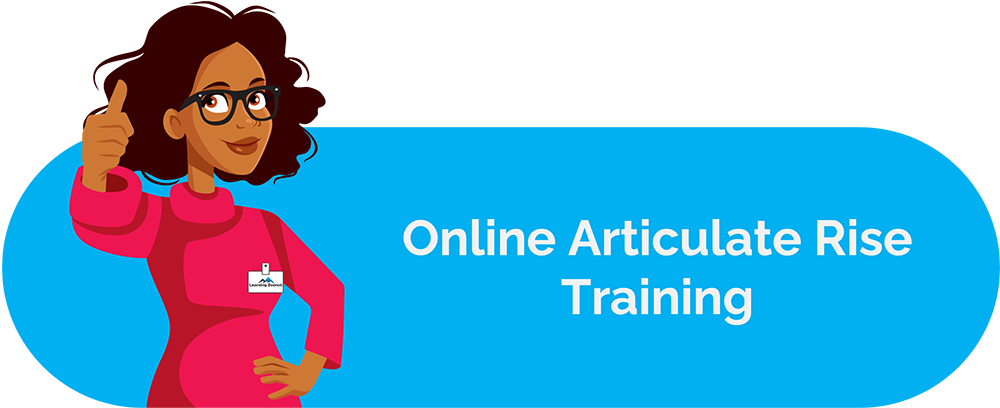Writing learning objectives that meets expected learning outcomes can do wonders for your organizational training endeavors. Learning objectives are the building blocks of any effective training program and determine which direction a course will take learners in. However, writing learning objectives is only the first step. They don’t ensure training success in isolation. Instead, they provide a solid foundation for the rest of the course to be built upon. In other words, it can be said that learning objectives are the first wave of momentum that boosts the rest of the instructional design process.
Learning Objectives, The Magic Triangle, and Instructional Alignment
Learning objectives are considered the building blocks of developing a course due to a model dubbed “The Magic Triangle” or “The Golden Triangle” of instructional design.
The magic triangle consists of three components:
- The learning objectives
- The instructional materials/methods
- Assessment
All three of these components are interconnected and influence learning effectiveness. When these elements synergize, they create instructional alignment.
Instructional alignment describes a state in which the instructional materials and course assessments directly fulfill the learning objectives chalked down at the start. Such a course also successfully meets the broader learning outcomes that the objectives are based on.
Thus, learning objectives, instructional materials, and effective assessments form the three steps to meeting learning outcomes.
Learning Objectives that meets expected Learning Outcomes. Let us take a closer look at each step.
Step 1: Come Up with Learning Objectives
Learning objectives are statements that lay down specific, measurable, and observable actions learners are expected to demonstrate at the end of a course.
Each objective reflects an attitude, skill, or piece of knowledge that learners must possess to be able to successfully utilize the new learning they will be receiving.
Thus, learning objectives underline the core capabilities a training program aims to instill in its learners.
Learning objectives don’t emerge randomly. They are based on the broader learning outcomes that an organization, department, or stakeholders wish to achieve.
Before writing learning objectives, instructional designers need to be clear about the larger goals an organization seeks to achieve through training. These could be business objectives, operational changes, structural changes, etc.
The gaps that create the need for training are often a great place to look for clues.
By following a structured approach, learning objectives can effectively capture the necessary attitudes, skills, and knowledge to focus on.
Once these are identified, IDs can draft a set of objectives that can further guide the rest of the course’s development.
To reiterate a previous point, learning objectives must be specific, observable, and measurable. It is vital that each learning objective includes a measurable action verb. You can follow the SMART goals framework to write effective learning objectives.
For instance, a poorly written learning objective for a diversity and inclusion training program would be:
“By the end of this course, learners will be able to list the different kinds of discriminatory behavior in the workplace.”
While this objective lists an action verb (list), it lacks specificity and measurability. A better way to write this objective would thus be:
“By the end of this course, learners will be able to list the three forms of microaggressions.”
This objective retains the action verb from before but specifies what kind of discriminatory behavior it is talking about. Additionally, this learning is measurable as learners are expected to be able to recognize three forms of microaggressions.
By following this template of specificity, observability, and measurability, your learning objectives will make it easier to develop the rest of the courseware.
Step 2: Develop Relevant Instructional Material
Once the learning objectives have been finalized, IDs can move on to developing instructional materials for the course. Having well-constructed learning objectives makes this phase easier because you already gain a clear picture of what you need to help your learners work towards.
Depending on the desired outcomes, budget, and available time, IDs can opt for a variety of formats and approaches, such as:
- Pictures
- Infographics
- Diagrams
- Animated graphics
- Static text
- Text that appears along with a voiceover
- Skits and narratives
- Interactive tabs
- Gamified activities
- Simulations and AR/VR
- Practice exercises
- Journal writing
Typically, instructional materials should cater to at least two or three sensory modalities to be most effective. Which of these best fit your course will depend on the learning objective and outcomes, as well as budget and time.
Step 3: Build Assessments that Test the Right Knowledge and Skill Areas
The final stretch of building courses that produce desirable learning outcomes includes coming up with learner assessments.
Assessments don’t just test learners, they also create opportunities for learners to revisit important topics, apply their learnings, synthesize information, and correct any mistakes in understanding or application they might be making.
Once again, if an assessment is aligned with learning objectives and instructional materials, it will effortlessly enhance learning.
To create relevant assessment activities, consider the following questions first:
- Would learners benefit most from objective or subjective type questions?
- Will learners have enough time to finish a given assessment during the learning process?
- Do the questions cover topics highlighted as important in the learning objectives and instructional materials?
- Do the assessments have clear instructions about what learners are expected to do?
- How will learners be graded?
- Will the learners be graded?
- What will the feedback mechanism be?
Once you have answers to these questions, you will be able to create assessments that lead to the broader learning outcomes of the course.
Infographics
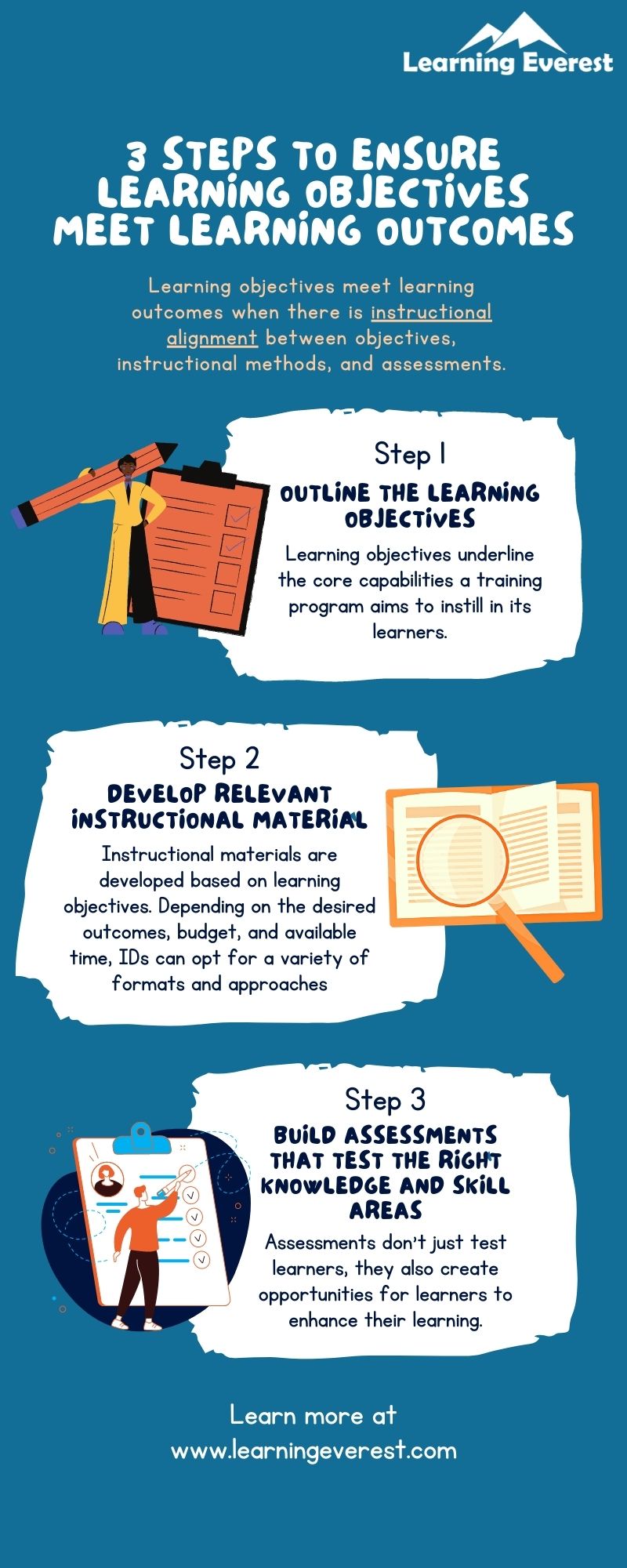
Learning Objectives that meets expected Learning Outcomes – 3 Simple Steps to Write Them – Infographics


